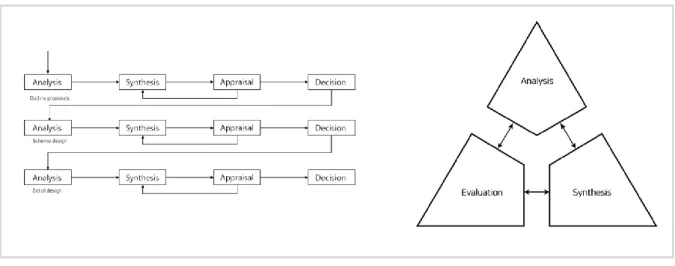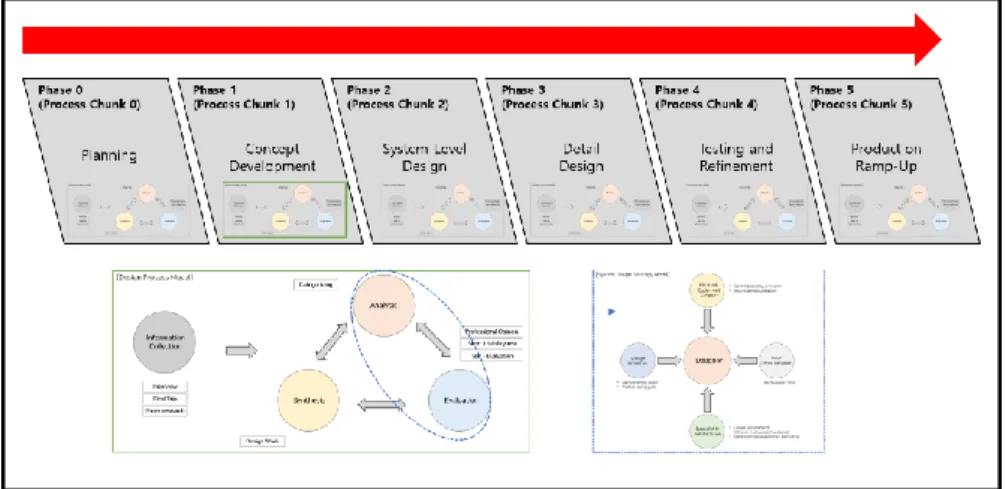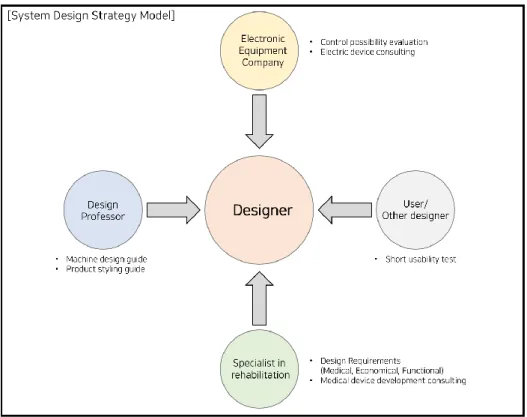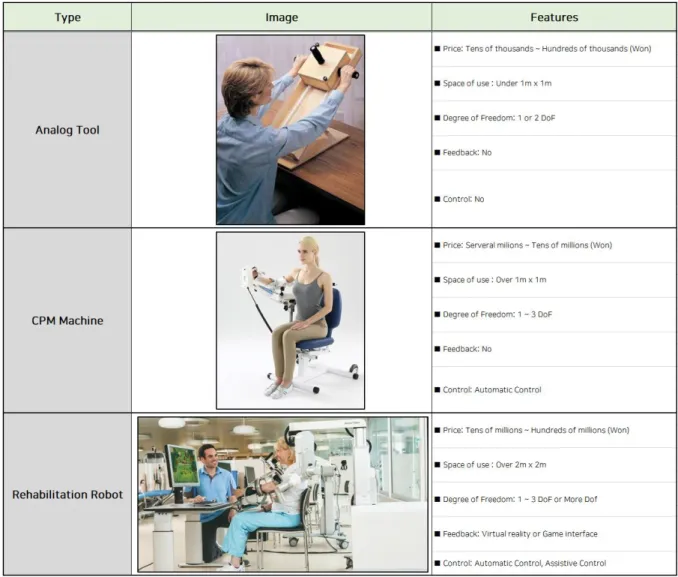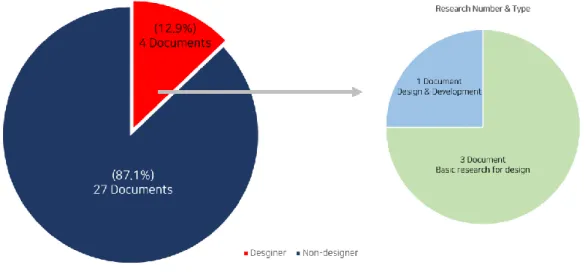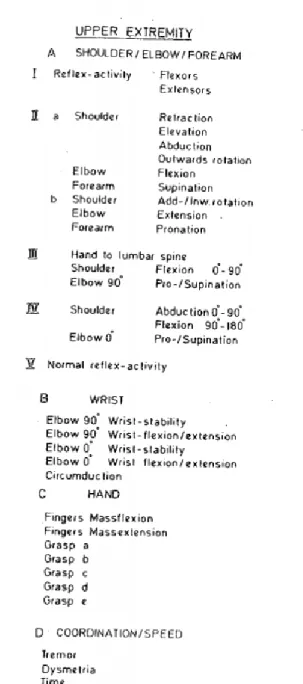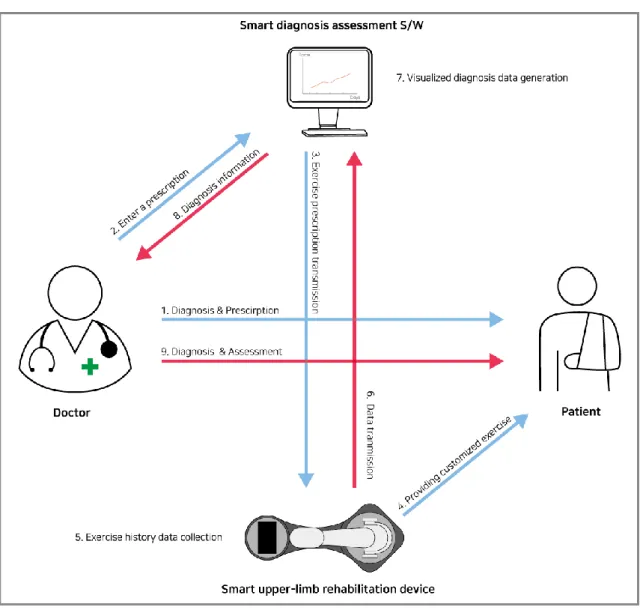This study used a design agenda based on an integrated design process for a new rehabilitation exercise equipment and service system as a potential upper limb rehabilitation treatment solution facing the Korean rehabilitation treatment industry. This activity made it possible to understand the design requirements and trends in the design of upper limb rehabilitation devices in Korea by extracting keywords and analyzing the collected information. A specialist in rehabilitation medicine at Kyungpook National University Hospital/Ulsan University, a company specializing in precision control, and a design professor at Ulsan Institute of Science and Technology provided assistance and professional knowledge necessary in determining the design of the elements during the process. of design.
Research background and development strategy
The background and purpose for developing the upper-limb rehabilitation device
One is the lack of health and medical personnel to carry out upper limb rehabilitation (KISTEP, 2019); the second is the high price of the device. The final purpose of this study is to present the results of a new rehabilitation exercise service system and device design based on the product design process to solve two problems that exist in the domestic rehabilitation industry. Therefore, the content of the study consists of deriving construction requirements, proposing system concepts, constructing the design of the device and usage scenarios, and planning the device.
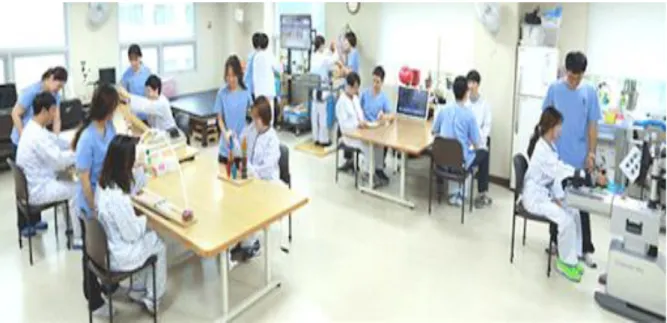
Research and development process and strategy
Moreover, Lawson, B (2006) claimed that the design process of Markus/Maver seems logical, but the reality is unrealistic because the design of the whole is sometimes changed by detail design. For a feasible system design, taking into account the specificity of the medical market, design strategy models such as the one shown in Figure 5 were applied to both elements: information collection and evaluation. The main design process follows Ulrich's (2008) design process model, but introduced the process piece concept at each stage to represent the actual design features.
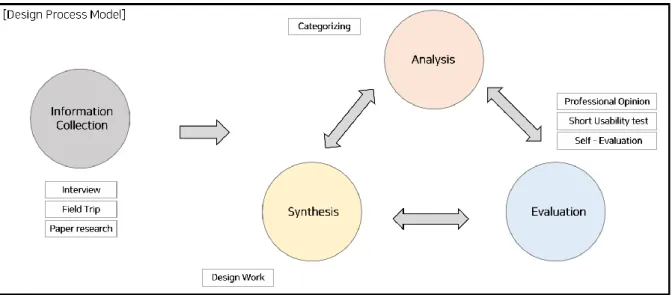
Prior development and research trends
Existing upper-limb rehabilitation tools
Domestic upper-limb rehabilitation design research trends
Design requirement definition
- Interview with rehabilitation medical specialists
- Observation of occupational therapy room
- Literature research: Fugl-Meyer Assessment (FMA) scale
- System design requirement
Existing products contain information about the correct size and price of the product and about features that are not considered necessary by the doctor. Unnecessary Functioning: Most patients engaged in upper limb rehabilitation exercises are elderly men with hemiplegia. Observation in the occupational therapy room was carried out to determine the actual conditions of the upper limb rehabilitation exercises.
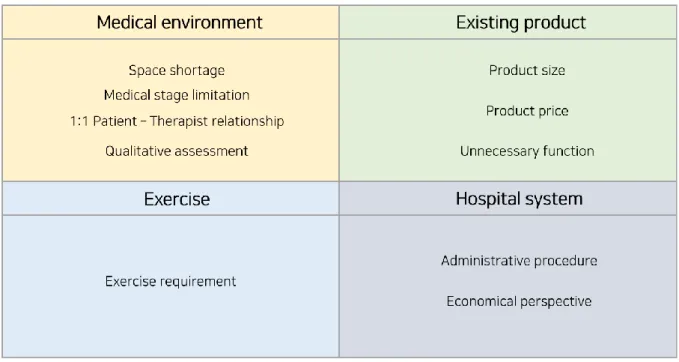
Concept design
System concept design
The doctor determines and diagnoses the patient's condition based on the transformed diagnostic information and data. The Smart Upper Limb Rehabilitation Device offers personalized exercises depending on the patient's condition, giving the right feedback to increase motivation for rehabilitation exercises. The Smart Diagnosis Assessment software collects information such as a patient's rehabilitation exercise history, the intensity of rehabilitation exercises, and the part affected by the smart upper limb rehabilitation device.
Device design
- Device specifications
- Device concept
- Device parts
- Device information structure and scenario
The device collects data from the patient; for example exercise history, the intensity of the exercise and the condition of the patient's body part. After determining the specifications for the key components, the concept of the product was developed according to the parts. Among them, the overall styling direction of the product was decided by developing the selected diagrams.
Based on these two pieces of information, the weight of the forearm and palm of this group is around 1.2 kg. The material properties and center of mass of the product are based on SolidWorks 2019. Therefore, in each case, a torque of 0.069 N-m and 0.3 N-m is generated counterclockwise from the center of rotation point.
Therefore, when the armrest is empty, a torque of 0.014 N-m is generated in a clockwise direction from the center of the rotation point. When an arm is supported, a torque of 0.214 N-m is generated in a counterclockwise direction from the center of the rotation point. In other words, adopting a counterweight is beneficial in managing the life of the car - a key component.
The overall size and display of the product was identified through self-evaluation using 1:1 scale paper prototyping.
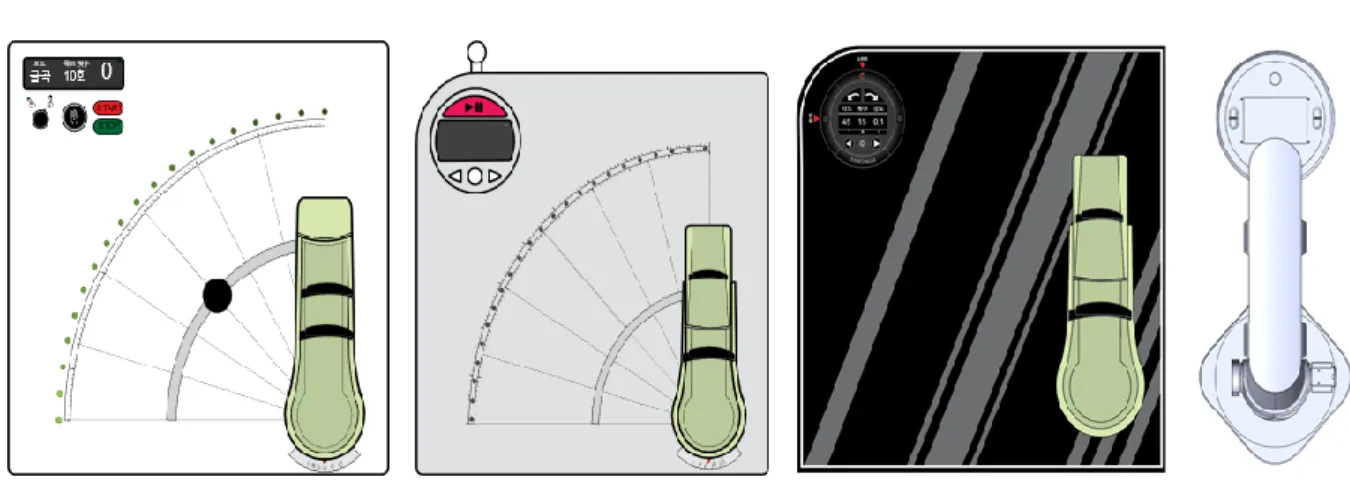
Detail design
Overall design
To implement the design, the visual materials shown in Figure 19 and Figure 20 were provided to electronic device professionals to enhance their understanding of the product concept and facilitate development.
Part connection structure
Running fit is applied to parts that need to be rotated, such as displays, so that there is always clearance for relative movement. For components that do not require relative movement, such as bolts, a forced fit is used.
Medical device certification
IEC Paragraph 9.3: Rough surfaces, sharp edges and edges of medical devices that cause injury or damage must be removed or covered (see Figure 27). IEC Paragraph 9.4.1: Medical devices and their parts intended to be placed on the floor or a table during normal use must be designed so that they do not fall or move suddenly (see Figure 28).
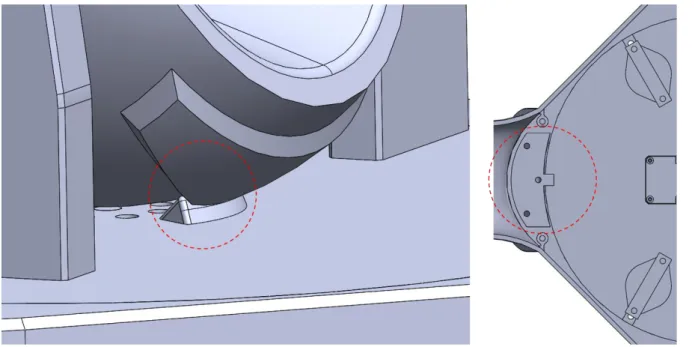
Prototyping and evaluation
One missing element was found during the design process, two parts were problematic when combined, and one area required usability improvement. The second prototype was made of the target material and color after improving the problems found in the first prototype (see Figure 30). Durability of the belt holder: the structure of the part that secures the belt to the arm fixation seems weak.
Armrest Bending: Bending occurs when a force is applied to a part of the armrest. The direction of the external force on the gear shaft: in the current structure, the motor is subjected to vertical drag, which has a negative effect on the motor. Screen size: 5 in the showcase can be uncomfortable for the user during an exercise program.
Handle part: The handle would be better if it could be used in different ways, like grip or interchangeable. Recording and repeating a certain action: an interesting function would be if the device could save a fixed exercise program and a specific exercise path of a certain patient. Material range: In terms of product management in a healthcare facility, some materials are not preferred.
For example, learning is a poor choice for product management because alcohol causes damage and learning fatigue.
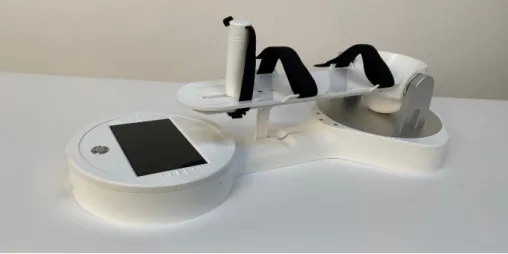
Result and discussion
Design outcome
Product concepts and usage scenarios related to IF design competitions are shown in Appendix 2 and Appendix 3.
Expected effects
In the case of quantifying diagnosis and prescription, medical personnel can diagnose, evaluate and describe the patient's condition more objectively and accurately by checking the patient's rehabilitation training status, training area and exercise cycle quantitatively through the system of rehabilitative exercises of the upper limbs. In addition, physicians can be relieved of the mental stress of judging the fine distinctions that can result from the quality assessment system. It is also assumed that the patient can control the degree of rehabilitation based on a numerical value, thus strengthening his motivation for rehabilitation.
Patient-centered training allows patients to receive three types of exercise: Passive, Active, and Assistive, depending on their degree of rehabilitation. Through this process, the patient can overcome a relatively large number of limitations and thus increase the motivation to rehabilitate the upper limb. Finally, it is expected that this device will be introduced to a relatively large number of hospitals to increase access to medical services for hemiplegic patients, as it can be manufactured and supplied at a relatively low price compared to rehabilitation robots by minimizing necessary functions.
Conclusion and discussion
Second, design in product development can be used as a role model that requires leadership in product development. Domestic design research conducted in the field of product development sometimes ends with concept design that presents only the function and form of the product. However, in these cases, designers often fail to participate in the post-concept design phases during the product development process.
In other words, it occurs because leadership was employed in engineering and production from the design phase during product development. Therefore, it is also necessary to design elements that can communicate with engineers to develop a product that can demonstrate the intended concept of leadership in the product development process. The presented design is based on consumer needs through observation of occupational rehabilitation rooms and interviews with rehabilitation doctors.
Therefore, Kyungpook National University Hospital and Ulsan National University Hospital received an offer to introduce the product after its development was completed. When developing products through this study, I realized how important it is for design to have a leading role in the development process. Therefore, designers must take the lead and guide the product development process to communicate these important factors to users.
It was necessary to prevent this by designing the product specifications taking into account the technical elements to communicate with the engineers.
Limitations and future works
Limitation of research
Future works
- Usability evaluation and improvement
- Element technology development
- Medical device certification
Since the products presented in this study are devices belonging to medical devices, it is essential to repeat and study the development process for medical device certification. Therefore, procedures are needed to adapt and supplement the design and technology to meet medical device certification standards. After the certification of medical devices, it is necessary to introduce the product into the hospital and test the product on patients.
보건복지부 및 신의료기술평가위원회. 보건복지부 및 신의료기술평가위원회 https://nhta.neca.re.kr/nhta/publication/nhtaU0601V.ecg에서 확인하세요. 편마비 환자에서 로봇을 이용한 상지 재활 치료의 효과.
심층 인터뷰 조사 방법론: 다른 사람에게서 배운 데이터 수집 및 분석 기술. 볼트 및 너트의 선택 및 고정에 대한 기술 지침. 편마비 환자의 재활운동 치료를 위한 상지 능동 운동 시스템 개발.
노동부 고시 및 KS 기준을 바탕으로 사무실 의자 및 책상에 대한 인체공학적 분석. 팔꿈치 강직 환자의 회복운동을 위한 재활로봇 시스템 개발. 뇌졸중 환자의 상완 손상 정도에 따른 상완 활동 및 일상생활 활동 예측 분석 - 임상 평가를 이용한 예비 연구.
APPENDICES
Display UI design
9.2 IF award materials (Representative Images)
IF award materials (Poster Images)
Product CAD drawing
Application for a patent
